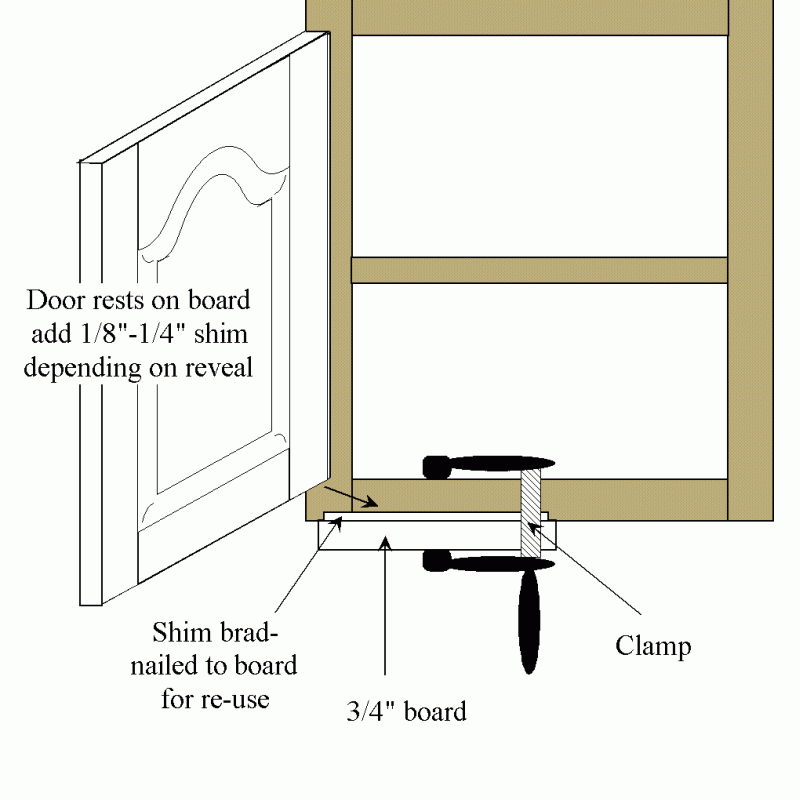Jig for Setting Hinges and Doors
Cabinet installers swap ideas for making door setting easier on the arms and joints. January 7, 2010
Question
Does anyone know of a clamp or jig that will hold a cabinet door in place while installing the hinges to the cabinet box? I developed arthritis in my left arm and it's getting much harder to hold a cabinet door in my left arm during installation, and I can't afford help at this time.
Forum Responses
(Cabinet and Millwork Installation Forum)
From contributor A:
Clamp a piece of board to the bottom rail - at the height you want the bottom of the door - to rest it on while you attach the door. Screw the top hinge in first to make it easy.
From contributor K:
What type of hinge? It would help to know a little more info.
From the original questioner:
Basically any type of hinge. What do you do if you have a full overlay and no space to clamp a support?
From contributor K:
I'm knocking on wood I don't have the physical problems you do. I hope someone here will have an idea to help you. I make drilling jigs for pre-drilling hinge locations and just hold the door up to get aligned when needed. For the
Blum hinges, I use the clip design because they're so fast and easy to mount. It seems that for the past 5 years or so everything has been full inlay doors and I use the Amerock self-mortising hinges. I pre-drill and again, just hold them up and start the first screw.
For any hinge design you always have room for some kind of device to hold the door or at least rest it on. Since you can't attach the door with it closed, try making a rest that you can clamp to the cabinet bottom while the door is open and sit the door on it to carry the weight. You may still need to steady it, but you won't be holding up the weight of it. Since I have not needed to ever do this, I don't have the mechanics worked out in my mind to offer you, but I can see a way to do this at least in principal. I'm envisioning an S-shaped assembly where one leg laps onto the cabinet bottom, the middle leg comes down over the face frame, then the bottom leg protrudes out towards you.
This bottom leg of the device hangs down low enough for the door to rest on it and is also long enough to protrude sideways to the end of the cabinet. Does this make sense to you?
From contributor A:
For full-overlay, no bottom-inset, just reverse it and clamp the wood on the top and bottom of the rail inside of the cabinet. Add shim (1/8"-1/4" to whatever reveal you want) to board for desired reveal...

Click here for higher quality, full size image
From contributor S:
If the cabinets are not installed yet and in the shop, I lay them on their hinge side with the door in position and screw it in. When possible I use a plywood jig, which registers off the inside of the top and bottom of the side panel, to drill pilot holes for the top hinge, so I could easily attach the base plates first and then clip in the hinges.
From contributor J:
Sort of like contributor K. If you're using hinges with a separate plate, make a little spacer that registers the top plate in the correct position and screw the plate on while you have the cabinet on your assembly table. When you get ready to hang the doors, just clip the top hinge on and the bottom one (with plate attached) is ready to screw to the cabinet. No jigs required. Works great with framed cabinets. Never tried it with frameless.
